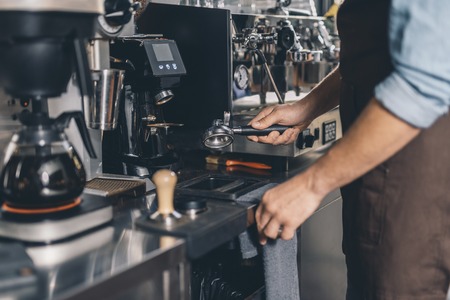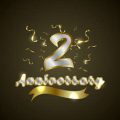1. Understanding Tasseography and Its Supplies
Tasseography, also known as tea leaf reading, is a fascinating form of divination that interprets patterns made by tea leaves left at the bottom of a cup. Before you begin your journey into tasseography, it’s important to understand that the tools you choose—especially the type of tea, cup, and other accessories—play a big role in your reading experience. Let’s explore the essential supplies you’ll need and how each choice can shape your results.
What You Need for Tasseography
The right equipment sets the stage for an accurate and enjoyable tea leaf reading. Here’s a simple breakdown of what you’ll need:
| Tool | Why It Matters | Tips for Choosing |
|---|---|---|
| Loose Leaf Tea | The texture and size of loose leaves create clearer shapes and patterns than bagged tea. | Select black or green teas without added flavors or large chunks; avoid herbal blends with powdery pieces. |
| Tea Cup and Saucer | A wide, shallow cup makes it easier to see and interpret the patterns left behind. | Use a plain white or light-colored cup so the leaves stand out clearly against the background. |
| Teapot or Kettle | Brewing fresh tea ensures the best flavor and consistency for readings. | A small teapot works well; avoid using strainers so leaves can flow freely into the cup. |
| Spoon (optional) | Helps swirl the leaves gently before drinking or flipping the cup. | A regular teaspoon is perfect; just be gentle to avoid breaking up the leaves too much. |
The Role of Tea in Your Reading
The kind of tea you use really matters in tasseography. Loose leaf teas are ideal because their bigger pieces form more distinct images when you’re interpreting symbols. Bagged teas, on the other hand, tend to break apart too much and don’t create clear shapes. In American homes, black teas like English Breakfast or Earl Grey are common picks—they’re easy to find at grocery stores and work perfectly for tea leaf reading.
Choosing the Right Cup for Tasseography
Your choice of teacup is just as important as your tea. Go for a cup with a wide rim and a smooth, light-colored interior. Cups with busy designs can distract from the leaf patterns and make interpretation harder. Many American readers use classic diner-style mugs or vintage teacups found at thrift stores—just make sure whatever you use feels comfortable in your hands and lets you see the leaves clearly.
Extra Accessories to Consider
You don’t need fancy tools to start tasseography, but some readers like to keep a journal nearby to jot down notes about symbols they see during readings. You might also want a small tray or cloth to catch any spills, especially if you’re practicing in your kitchen or living room. With these essentials in hand, you’ll be ready to dive into the art of tasseography and discover what messages your tea leaves have for you!
2. Selecting the Ideal Tea Leaves
If you’re just starting out with tasseography, picking the right tea is a big part of the experience. The kind of tea leaves you use will affect how easy it is to read the patterns and symbols left behind in your cup. In American tasseography circles, loose-leaf teas are always the top pick because they create clear shapes that are perfect for interpretation.
Why Loose-Leaf Tea Matters
Loose-leaf tea is preferred over tea bags for tasseography because the larger leaves settle in unique, readable ways at the bottom of the cup. Tea bags often contain tiny bits or dust that clump together, making it much harder to spot images or symbols.
Popular Types of Loose-Leaf Teas for Tasseography
| Tea Type | Why It’s Good for Tasseography | Flavor Notes |
|---|---|---|
| Black Tea (e.g., Assam, Darjeeling) | Larger, dark leaves create bold, clear shapes; commonly used in Western practices | Strong, malty, sometimes floral or fruity |
| Green Tea (e.g., Sencha, Gunpowder) | Medium-sized leaves provide distinct patterns; offers a lighter color contrast in the cup | Fresh, grassy, slightly sweet or vegetal |
| Oolong Tea | Semi-rolled leaves expand in water and form intricate shapes; good for detailed readings | Complex, floral, sometimes creamy or toasty |
| Herbal Blends (no added fruit pieces) | Dried herbs like chamomile or peppermint work if they have visible leaf structure and no powders or fine particles | Mild, soothing, varies by blend |
Tips for Choosing Your Tea Leaves:
- Avoid flavored teas with fruit chunks or petals: These can make confusing shapes and muddy the reading.
- Go for single-origin teas: They usually have consistent leaf size and texture.
- Skip powdered teas: Matcha or instant teas don’t leave readable patterns.
- Try different types: Each type of tea settles differently—experiment to find what works best for you.
Selecting the right loose-leaf tea is the first step toward meaningful tasseography readings. It’s not just about taste—it’s about creating a canvas where messages can appear clearly and inspire your imagination.

3. Choosing the Right Cups and Saucers
When it comes to tasseography, the type of cup and saucer you use matters more than you might think. The shape, size, and material of your tea cup can all influence both the look and interpretation of the tea leaves. Here’s what you need to know to pick out the best cups and saucers for a truly magical reading experience.
Why Cup Shape Matters
Cup shape plays a key role in how tea leaves settle after you swirl and drain your tea. A classic wide-rimmed, shallow cup gives more surface area for the leaves to spread out, making symbols easier to spot. On the other hand, deep or narrow cups can cause the leaves to cluster, which may make readings more challenging but sometimes offers more intricate patterns.
Choosing the Right Size
A standard size teacup (about 6-8 ounces) is usually perfect for tasseography. Oversized mugs common in American households may look fun, but they give too much space for the leaves to scatter and make it hard to read clear symbols. Tiny espresso-style cups dont provide enough room for the leaves to move around.
| Cup Type | Pros | Cons |
|---|---|---|
| Wide-rimmed Teacup | Easy to see patterns, traditional choice | May spill if not careful |
| Narrow Teacup | Creates detailed clusters of leaves | Harder to interpret for beginners |
| Mug | Comfortable grip, common in the US | Too large for clear readings |
| Demitasse Cup | Cute aesthetic, good for quick readings | Too small for leaf movement |
The Importance of Material and Color
The best cups are made from smooth ceramic or porcelain. These materials allow tea leaves to move freely and show up clearly against a light background. White or pastel interiors are especially popular because they make it easier to spot shapes in the dark tea leaves. Avoid cups with busy patterns inside—they can distract from the symbols formed by the leaves.
Pro Tip: Stick with Simple Designs
If you’re just getting started with tasseography, choose a plain white cup and saucer set. This classic approach helps keep your focus on interpreting the leaf formations rather than getting distracted by decorative details.
Saucers: More Than Just an Accessory
The saucer isn’t just there for show! It catches drips as you swirl your cup and provides a stable place to rest your cup during readings. Some readers also use the saucer as part of their ritual—placing drained leaves onto it for further interpretation or simply as a practical way to keep things tidy.
4. Must-Have Accessories for Accurate Readings
When practicing tasseography in the U.S., having the right accessories can make all the difference in both the enjoyment and accuracy of your tea leaf readings. Beyond just tea and cups, certain tools are essential for creating a smooth ritual and ensuring clear, meaningful interpretations.
Key Accessories Every Reader Needs
| Accessory | Purpose | Why It Matters |
|---|---|---|
| Strainer | Separates loose leaves from the liquid before pouring into the cup | Keeps leaf patterns neat and ensures only the right amount of leaves remain for reading |
| Spoon (preferably non-metallic) | Stirs tea gently and helps move leaves if needed | Prevents accidental damage to delicate cups and helps position leaves for clearer symbols |
| Tray or Saucer | Catches spills and holds cup during swirling or flipping steps | Adds a layer of neatness to your setup, making the ritual feel intentional and organized |
| Napkin or Cloth | Cleans up drips, dries hands, or wipes the cup’s rim if needed | Keeps your workspace tidy and prevents smudging important patterns in the cup |
| Tiny Brush (optional) | Moves small leaves without disturbing larger patterns | Helps you highlight or clear up specific symbols for more precise readings |
Creating an Authentic Experience with American Flair
If you want to bring a bit of American style to your tasseography sessions, consider using trays with vintage designs, colorful napkins that match your personality, or unique spoons from local flea markets. Accessorizing isn’t just about function—it’s about building a ritual that feels special each time you read.
Tips for Choosing Your Tools:
- Go for durable materials: Ceramic or glass cups, wooden or silicone spoons, and sturdy trays will last longer.
- Personalize your setup: Choose patterns and colors that reflect your style or add seasonal touches for holidays.
- Keep everything handy: Store all accessories together in a decorative box or basket so you’re always ready for a spontaneous reading.
With these must-have accessories at hand, you’ll find it easier to focus on interpreting the leaves and enjoy every step of the tasseography journey.
5. Caring for Your Tools and Creating a Ritual Atmosphere
Maintaining your tasseography tools and setting up the right atmosphere can make every tea leaf reading more meaningful and special. Here’s how you can keep your essentials in top condition while also creating a ritual space that feels authentic and welcoming, American style.
Tips for Maintaining Your Tasseography Tools
| Tool | Care Tips |
|---|---|
| Tea Cups | Hand wash gently with mild soap, avoid abrasive sponges. Dry thoroughly to prevent stains or cracks. Store in a safe spot where they won’t get chipped. |
| Loose Leaf Tea Strainer | Rinse right after use to prevent staining. Occasionally soak in a solution of water and baking soda to remove residue. |
| Teapot or Kettle | Descale regularly if you have hard water. Clean inside with vinegar and water every few weeks. Always allow to dry fully before putting away. |
| Saucers & Spoons | Wash after each use and polish if needed for those made of silver or brass. Store together with cups for easy access during readings. |
Setting the Scene: Creating a Ritual Atmosphere
A great tasseography session is about more than just reading tea leaves—it’s about the experience. Here are some simple ideas that fit right into American homes:
Choose a Comfortable Space
- Pick a quiet spot where you won’t be disturbed, like your kitchen table, living room nook, or even outside on a porch.
- Add cushions or a favorite throw blanket to make it cozy.
Add Personal Touches
- Light a scented candle (lavender or vanilla are popular in the US) or use an essential oil diffuser to set a relaxing mood.
- Play soft background music—think acoustic guitar, folk, or nature sounds—to enhance focus and calmness.
- Decorate with items that matter to you: family photos, heirlooms, or fresh flowers from your garden.
Create a Simple Ritual
- Brew your tea mindfully, paying attention to each step—from boiling water to pouring over leaves.
- If you’re reading for others, invite them to think of a question while the tea steeps. This small ritual helps everyone feel connected and intentional.
- Consider starting with a moment of gratitude or reflection—something many Americans find meaningful before beginning any mindful activity.
Tasseography Tool Maintenance Checklist
| Task | Frequency |
|---|---|
| Cup & Saucer Washing | After Every Use |
| Kettle/Teapot Cleaning | Weekly or as needed |
| Strainer Soaking (Baking Soda) | Monthly |
| Candle Refresh/Replacement | As Desired |
| Mood Music Playlist Update | Seasonally or as Inspired |
The key is to keep things low-stress and enjoyable. With well-cared-for tools and an inviting atmosphere, your tasseography readings will be both accurate and deeply satisfying for yourself and anyone you share them with.


